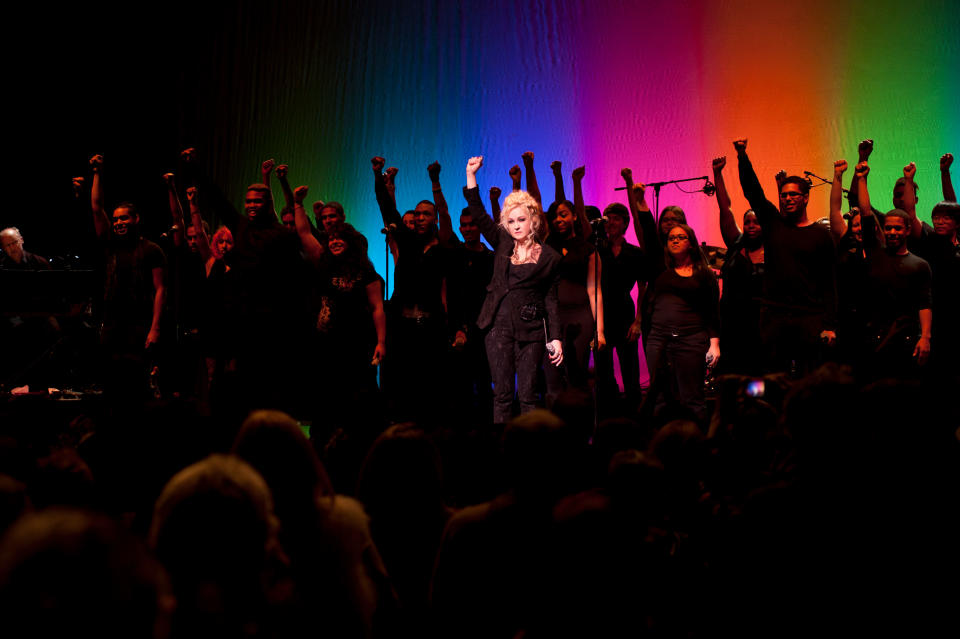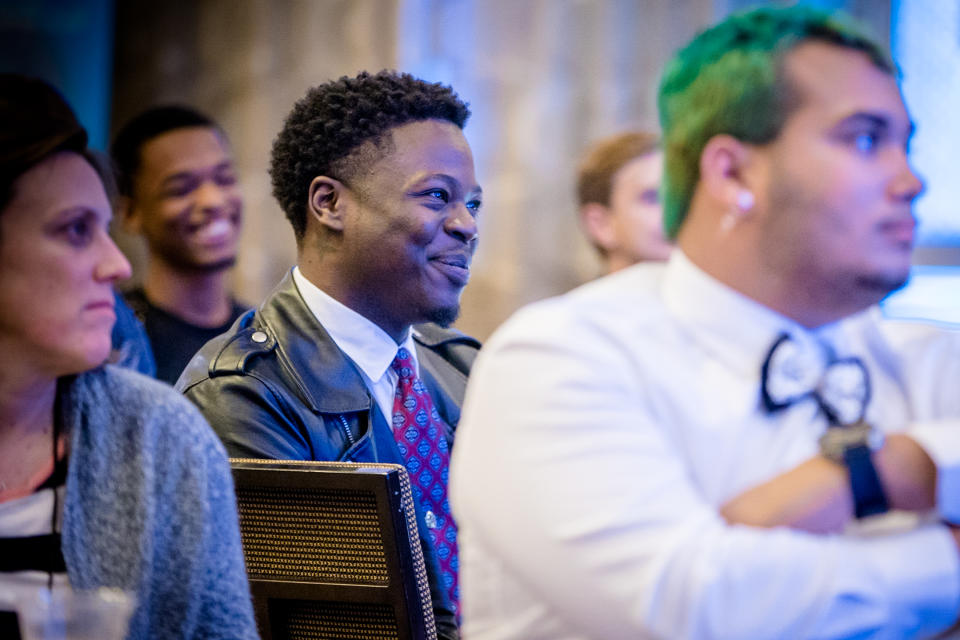Here's how Cyndi Lauper's non-profit is fighting LGBTQ youth homelessness
Sponsored by Citi.
In 2008, Cyndi Lauper founded her non-profit because she learned of one staggering statistic: 40% of the 4.2 million youth experiencing homelessness identify as LGBTQ. So True Colors United was formed, offering free training and resources on how to meet the needs of LGBTQ youth experiencing homelessness in the effort to end the staggering issue.
"True Colors United is advocating tirelessly to ensure that LGBTQ youth experiencing homelessness are included and protected in all efforts to end homelessness," associate communications director Nick Seip told TODAY via email. "We’re working hard to not only protect funding for critical services, but to expand and transform programs to prevent and end youth homelessness. Because the status quo isn’t working."
Our sponsor, Citi, shared the True Colors organization with us. In a statement to TODAY, a spokesperson said: “Citi is proud to continue supporting True Colors United’s work to prevent and end youth LGBTQ youth homelessness. This June, when you donate to True Colors United, Citi will match donations until it reaches its goal of $100,000.”
All funds donated to True Colors United go directly to the organization's efforts to end LGBTQ youth homelessness, which they do on four levels: local, state, national and international.

"In a time where LGBTQ rights are under attack, it’s more important than ever that young people know that their lives are not up for debate," Seip added. "By making our own communities welcoming and affirming of LGBTQ youth, we can help prevent all young people from experiencing homelessness. And by helping shelters and service providers become more LGBTQ-inclusive, we can help more young people get the support they need."
According to the organization, LGBTQ young people are 120% more likely to experience homelessness than non-LGBTQ youth. The most common reason LGBTQ youth experience homelessness is familial rejection due to their sexual orientation or gender identity. Half of all youth get a negative reaction from their parents when they come out to them. More than one in four are thrown out of their homes.

"While rejection is the most frequently cited reason LGBTQ youth experience homelessness, it’s not the only one. According to service providers, additional reasons include aging out of the foster care system, poverty and abuse in the home," Seip added.
"Often, it’s not one thing that causes homelessness, but a combination of many. To end youth homelessness, we need to understand how different factors affect different communities. LGBTQ youth are also more likely to experience homelessness for longer periods of time than their non-LGBTQ peers — and are often unable to get the help they need out of fear of discrimination."

